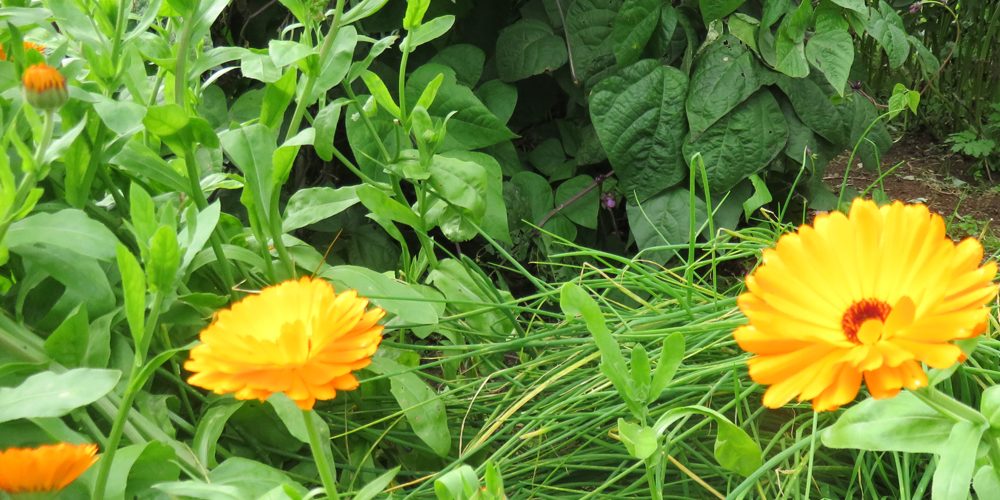Some people remain sceptical of using companion plants as a natural way to keep pests under control. In fairness, there’s not a lot of proven science to back it up. We’ve tried growing veg both with and without using companion plants, and this is our take on it… when we have the companion plants in the plot (and we’re talking about our Companion Plant Pack here which includes nasturtiums, marigolds, and tagetes) we simply see a more diverse range of wildlife. It’s a more balanced eco-system, and although many of the bugs are so tiny you can hardly see them, they are there in good numbers. More ladybirds, different butterfly varieties, more bees. And that’s just for starters.
That’s our first observation. Our second observation is that when we plant nasturtiums near brassicas, the nasturtiums get completely annihilated by caterpillars, whilst the brassicas receive relatively little damage. Our third observation is that the more we plant in and around our veggies, the more effective it seems to be. It makes sense really, as it replicates nature a little more closely. We can’t imagine carrots would grow alone in a perfectly straight row without a little help from us humans. So it seems logical that a few alliums planted in amongst them to mask the scent would help to make them less of a target to the ubiquitous carrot fly.
Our final observation is that everything you do in your veg patch is just part of the bigger picture. Protecting your plants well uses a mish-mash of different methods – nets, fencing, cloches, fleece, beer traps, companion plants, human intervention – they all play a part and we’d always advise that you don’t rely on one thing to do the job. But definitely, bring more diversity into the plot, and it’ll make a difference.
Finally, here are some ways you can use companion planting:
- Plant a row or bed of nasturtiums alongside your brassicas to protect them from caterpillars. You’ll find that butterflies are attracted to the nasturtiums and will lay their eggs there instead. When the caterpillars hatch, they’ll completely destroy your nasturtiums but your brassicas will remain largely untouched. We can definitely say that this has worked for us many times in the past.
- Pop a few stinky plants from the allium family in a row alongside carrots to deter carrot fly. Onions, spring onions, chives and garlic chives work well. The smell masks that of the carrot plant so that the carrot fly doesn’t bother paying your plants a visit in the first place.
- Marigolds and Tagetes can be used anywhere that aphids and and whitefly are a problem, (for example, in amongst your tomato plants) as they will attract ladybirds and lacewing which will help to keep whitefly and aphids at bay. You can also try planting basil in pots in the greenhouse with tomatoes.
- Mint in pots can help wherever you have problems with flea beetles (lots of leafy veg are affected by these bugs which make lots of tiny weeny holes in the leaves). The strong scent deters the flea beetles.
- Dill and fennel can also help to attract ladybirds and therefore keep numbers of aphids down.

